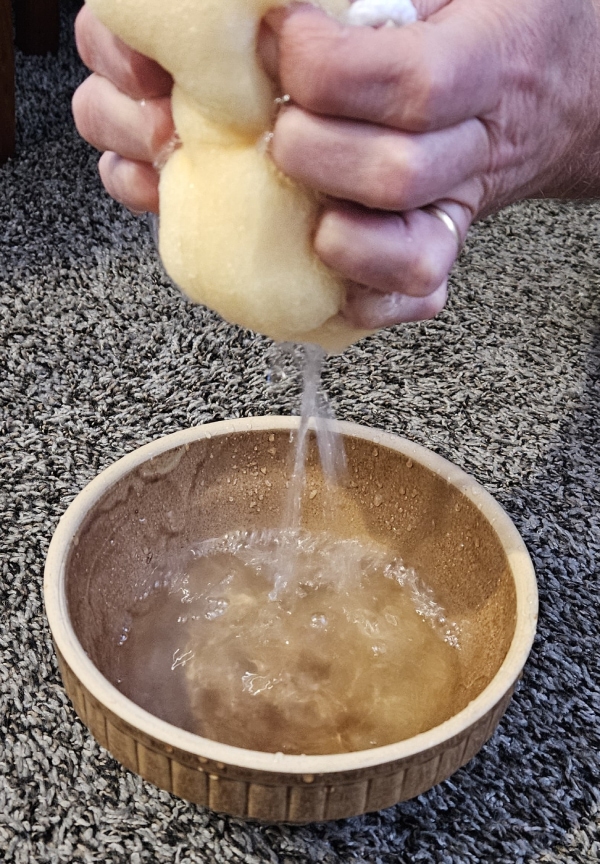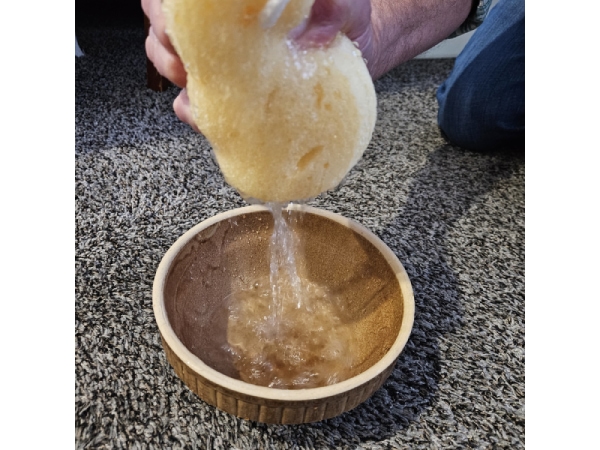Conversations in Grief Blog: Grief Sponge
Grief Sponge
by Laura Wessels

My brother shared with me what it was like to parent his young adult children. He described himself as a “grief sponge,” explaining that he took on their pain, struggles, and setbacks. He soaked it all up like a sponge and carried the weight of their struggles around. I resonated with that image as a fellow parent of adult children. I also soak up my children’s worries and hold on, feeling weighed down by their troubles.
The bereaved can become grief sponges as well, in a slightly different way. Because of their intimate knowledge of their own grief, some tell me they are unable to participate in a grief support group because they sponge up others’ pain along with their own pain.
Author and podcaster Emily A. Jensen captures what it means to be a grief sponge, “I try to soak up grief like a sponge. I will myself to expand and absorb sorrow like a long deep breath that never exhales. I try to hold it in... But I know that the stomach rumbles and waking up with a sore jaw...is not what I ate for lunch or how I slept—it’s sorrow in my bones and ligaments.”
While Emily is writing about holding her own sorrow in a sponge, this blog focuses on how our grief sponge also holds other people’s sorrow along with our personal sorrow.
While a grief sponge absorbs the grief of others, an alternative is to meet someone’s grief with empathy. An excellent illustration of empathy is an animated explanation from author and research professor Dr. Brené Brown, which you can find on YouTube. Empathy is joining someone where they are in their thoughts and feelings, recognizing and naming what they are feeling without judgment, and connecting with them. When we practice empathy, we help the one who is suffering feel less alone. They feel heard and understood.
We can comfort others who are grieving by hearing their pain and being with them in their pain. But absorbing their pain makes us heavy and stagnates us. Picture a sponge full of water. It can no longer be used. There’s no room for anything else.
How do we stop being a grief sponge? Emily Jensen adds more to her grief sponge imagery, “I soak up the grief, but it also wrings out as hard-won joy. Because it’s not meant to be soaked or held alone, but sifted...” Someone else wrote about changing your grief sponge into a colander. Both a sifter and a colander are pictures of receiving grief from others and allowing it to drain away.

A bowl may be another helpful image. As a grief counselor, I am aware that I can be a grief sponge. After listening to the pain and sorrow of others, I hold their pain. Their sorrow becomes my sorrow. The bowl imagery guides me in setting my intention using a ritual. I could gather a sponge full of water and an empty bowl. Following an encounter, I hold the sponge filled with water, representing the bereaved’s pain and grief and my prayer for healing. Then I squeeze their sorrow into the bowl. The bowl is a place to hold their sorrow. Their pain is separated from my pain while still holding space for them. This ritual allows my heart space for my own grief. I have not practiced this ritual but offer it as a way forward for those grieving and those who support people who are grieving.
This practice could be a ritual using a bowl and sponge or an exercise where you imagine squeezing your sponge of grief into a bowl. When you soak up the grief of others, wring out their grief into a bowl. The bowl represents your care and your love for others, a container for their sorrow. But your grief sponge is for your own grief. You have enough sorrow of your own.